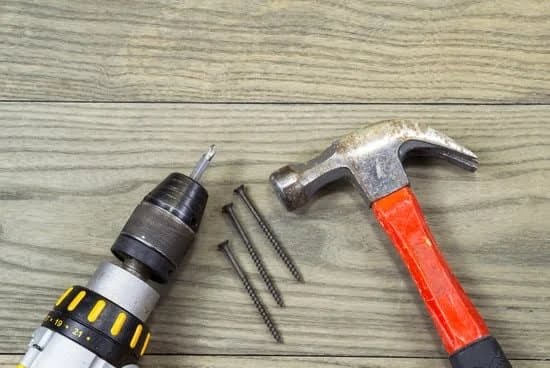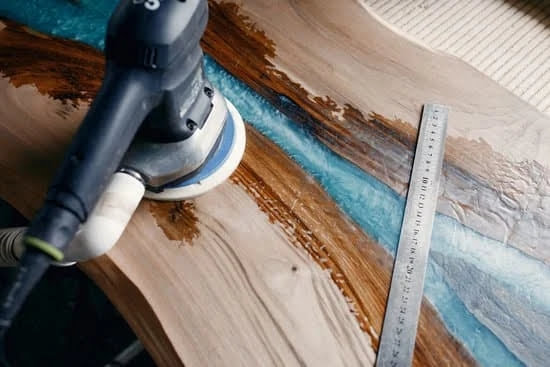Introduction
Woodworking is an enjoyable and worthy hobby that has been capturing the imaginations of creative people all over. It allows you to create beautiful and unique pieces of furniture, decorations, signs, sculptures and more. Woodworking requires basic tools to get started and can easily be practiced on a small budget.Whether you are an experienced carpenter or simply a beginner wanting to give it a try, having the right set of tools will go a long way.
Below is an introduction to some of the essential woodworking tools needed for success.
Essential Tools:
1. Hand saw – This simple tool can help you quickly cut through wood materials like plywood or boards with ease. You will want to make sure that you select one with special teeth designed for cutting wood correctly without damaging the material.
2. Electric drill – An electric drill is perfect for creating tiny holes in thick materials as well as fitting fasteners like screws into place when attaching parts together. Another great feature of electric drills is their ability to come equipped with speeds and torque settings based on the type of job being performed making them an invaluable tool for any woodworker’s arsenal.
3. Sandpaper – Sanding is critical when trying to create smooth surfaces that are free of imperfections or nail marks from joinery techniques used in building furniture and other projects made out of wood. A good selection of sandpaper grades, ranging from coarse for larger areas to ultra-fine for finishing details, will get most jobs done successfully . The variety comes in sheets or drums that fit onto electric drills which make detailed work much easier..
4. Chisels/Mallets – For finer detailing work such as cleaning up mortises or carving intricate shapes, nothing beats using chisels accompanied by a mallet which allows precise control without damaging the surface below when hammering away at your material. Investing in high-grade chisel sets like those made by Japanese companies will be worth it if you are serious about getting immaculate results every time while remaining safe during use due to sharper edges and better construction quality overall compared to cheaper alternatives..
Essential Hand Tools for Woodworking
If you want to start woodworking, the best place to begin is with the basic hand tools. Hand tools will be your best friend when getting started in this craft, and are the most important tools for every woodworker. Below are some of the basic essential hand tools for woodworking.
A handsaw is an absolute must-have and can be used for a multitude of different cutting tasks. It’s perfect for seaming boards or trimming them down in size and shape, especially straight cuts. There are many different types of handsaws to choose from, like crosscut saws, ripsaws, and dovetail saws. A chisel is another handy tool that can be used to cut away at edges, Get into small corners with precision detail and notch out mortises which will enable more intricate joints between pieces. Many have a range of sizes to suit various cutting depths allowing you more control over delicate details in your finished piece.
Hand drills are also useful and will help you drill through materials quickly and accurately – great for creating pilot holes or larger holes such as those needed to fit door handles onto a workpiece. A marking knife allows for a clear visible line when laying out board edges or forming compound angles on a workpiece plus it’s helpful for ferreting out knots or other blemishes prior to assembly too! And finally an adjustable square makes it easy to measure angles precisely to guarantee all parts of your project fit together nicely with no gaps when they come together at completion time.
Key Power Tools for Professional-Ready Projects
Beginning woodworkers need the right tools to create professional-looking projects. While there is no limit to the type of tools you can use, some key power tools are essential for almost any woodworking project. A table saw is one of the most important tools for serious woodworkers. It allows you to quickly and accurately rip boards and crosscut wood with ease; a great time saver when working with large pieces of lumber. The band saw is great for cutting curved lines, as well as tight or intricate cuts; a feature that a jigsaw cannot achieve. A drill press provides precision drilling for accurate, repeatable holes with clean edges and ideal for making pocket screws and dowels. A router produces smooth edges on boards and can make curved lines too. And finally, a miter saw enables precise angle cuts from 45° all the way down to 1° with dust collection ports that help keep your workspace dust-free. With these key power tools in your workshop, you’ll be able to take on just about any project!
Customizing Your Toolkit for Your Projects
When creating a custom toolkit for any type of woodworking project, it is important to take into account the materials you will be using, the size of your projects, and the techniques that you plan on using. Basic tool kits can include saws such as handsaws, jigsaws, circular saws and routers. However, depending on the project, additional tools may be needed such as routers with different bit styles to create more intricate designs, planes for smoothing rough edges or edging tools for detail work. For precision cutting and measurement an accurate tape measure and square are essential for good results. Other items that should be included in every woodworker’s toolkit are drill motors with an assortment of bits for drilling holes; a combination sander for sanding down faces and edges; clamps for holding wood in place while glue sets; chisels for detail work; mallets for striking chisels; hammer for nailing and installing trim; an adjustable wrench and screwdrivers appropriate to the job. Once these basics are acquired additional specialty tools can be added to increase the effectiveness of your workshop.
Selecting Quality Tools for Long-Term Use
For woodworking beginners, it’s important to select appropriate tools for your job. Quality tools are essential for taking on woodworking projects and will make the process easier, allowing you to achieve the desired results. You’ll need a saw, such as a jigsaw or circular saw, for making straight and curved cuts in wood. The type of saw you select should be suitable for the type of project you’re working on. For example, a circular saw is better suited to cutting large pieces of lumber than a jigsaw which is better used with smaller works of art. Other important tools are chisels and planes which are used to shape and smooth edges. Clamps can also be useful when joining pieces together and carving tools allow you to create unique intricate designs in wood. If investing in high-end long-lasting quality tools is cost prohibitive another option is to buy discounted pre-owned tools from pawn shops or thrift stores.
Best Practices for Using Woodworking Tools
If you are interested in getting into woodworking, the first step is understanding best practices for using the many tools available. Many people jump into this hobby without any prior knowledge and end up with faulty results. Here are three key tips to keep in mind when using basic woodworking tools like saws, routers, drills, sanders and chisels.
1. Wear Protective Gear: It’s important to protect your eyes, ears and skin when working with wood. Safety glasses and work gloves will help prevent injuries, while ear plugs or noise-cancelling headphones can protect you from loud noises that could damage your hearing long-term.
2. Read Instruction Manuals Before Operating Tools: It’s tempting to skip the instructions and dive right in but doing so could lead to mistakes and even serious accidents. Most power tools come with an instruction manual that is specific to that model. Reading it thoroughly before operating a tool is paramount for safety as well as achieving desired results.
3. Maintenance is Key: Occasionally maintain your tools by lubricating moving parts on machines like table saws and bandsaws every year or two -depending on how often you use them- as overly dry parts can cause wear and tear over time. Furthermore, keep blades sharpened for a smooth cut -make sure power tools are unplugged before sharpening! Lastly, clear away dust frequently to avoid clogging certain components like air filters which could cause machinery malfunctions down the road if overlooked for too long.
Safety Tips for Woodworking Enthusiasts
Start off safe by investing in the right safety equipment! Make sure you have all the necessary protection. This should include safety glasses, ear protection such as earmuffs or plugs, a dust mask, and appropriate eye protection when operating machinery. Moreover, never forget to wear a pair of good-gripping work gloves when working with wood or using any type of hand tool.
Wear warm clothing like overalls to prevent splinters from getting through your clothes. Additionally, shop for comfortable shoes that provide extra grip and cushioning to the feet when you need to stand for hours on end. Invest in a sturdy tool belt to conveniently store small pieces and tools around your waist for easy access during woodworking projects.
Apart from this basic safety gear, be sure to have an emergency kit at arm’s reach fitted with items such as fire extinguishers and first aid kits. Additionally, stock up on supplies like bandages and medical tape required in case an accident happens while operating sharp tools or saws. Finally, double check that your work area is well-ventilated if it lacks proper air circulation outdoors because of paint fumes or other materials used indoors.
Where to Find the Best Resources for Buying Tools
Power tools are essential for any woodworker, but it’s important to know where to buy them. The best sources for purchasing woodworking tools can be found online and at local hardware stores. Buying from these sources ensures that you get quality, reliable tools.
Online sources offer a wide variety of tools from multiple manufacturers, allowing you to compare prices and find the tool that best fits your budget and needs. Some websites enable users to read and post reviews about the products they purchase. Reading others’ experiences with specific products can help you make an informed decision about which products offer the most value for your money. They also help you decide which brands are most trusted by other customers like yourself.
Local hardware stores often provide advice on buying woodworking tools, so it’s worth visiting them as well. You can ask knowledgeable staff members which types of power tools suit your current project and which brands have the best ratings. This can help skip over noisy or overpriced devices in favor of something more suitable to your project’s needs. Furthermore, when going this route, customers may receive assembly or maintenance tips that will be helpful once the tool is in use.
Aside from power tools, many budding woodworkers require access to a wide range of hand tools such as saws, chisels and sanders to complete their projects with accuracy . If approaching a DIY store it’s important to also bring plans so that staff can recommend the tools needed for implementation at each stage of manufacture . Buying second-hand is another great way of getting hold of all these vital pieces; however it’s important to inspect every item closely before making a purchase in order to guarantee that quality isn’t sacrificed by price point. Searching online auction sites and classified listings will yield results which sellers who have used items they no longer need – ensuring affordability while supplying all necessary items at once . Woodworking magazines or independent bloggers often feature handy box sets containing all required hand-tools , offering competitively priced bundles . There are a wealth of option out there beyond simply relying upon commercial suppliers – meaning anyone should be able to find exactly what they need without breaking their budget !
Conclusion
Woodworking is a wonderful and rewarding skill to learn and practice. It can offer you hours of creative enjoyment, not to mention the satisfaction that comes from seeing a beautifully crafted woodworking project take shape. To get started in woodworking, there are a few essential tools that you’ll need: saws (hand saws, circular saws, jigsaws), clamps (toggle clamps, panel clamps, bar clamps), chisels and gouges, planes (try-plane, block planes), file and rasps, sandpaper and abrasives, marking devices (pencils, calipers). With these basic tools in hand – plus some time spent learning techniques to use them safely – you’re ready to embark on your own journey as a woodworker.
Beyond the initial set of essential tools needed for mastering the basics of woodworking, there are also more specialized tools like router tables and joiners that allow you to create specific projects with precision and accuracy. Using these more advanced tools make complicated furniture pieces come together easily by carefully cutting intricate edges or creating beautiful jointed pieces.
Whatever your skill level is in woodworking ” novice or experienced ” it’s a great feeling when you finish working on an exceptional piece with substantial results from your own two hands. Enjoying the journey of learning how to churn out quality projects is really what makes woodworking so much fun. As long as your shop is stocked with these must-have tools and workmanship tips up under your sleeves….you’re sure to have many great times ahead!

Hi everyone! I’m a woodworker and blogger, and this is my woodworking blog. In my blog, I share tips and tricks for woodworkers of all skill levels, as well as project ideas that you can try yourself.





